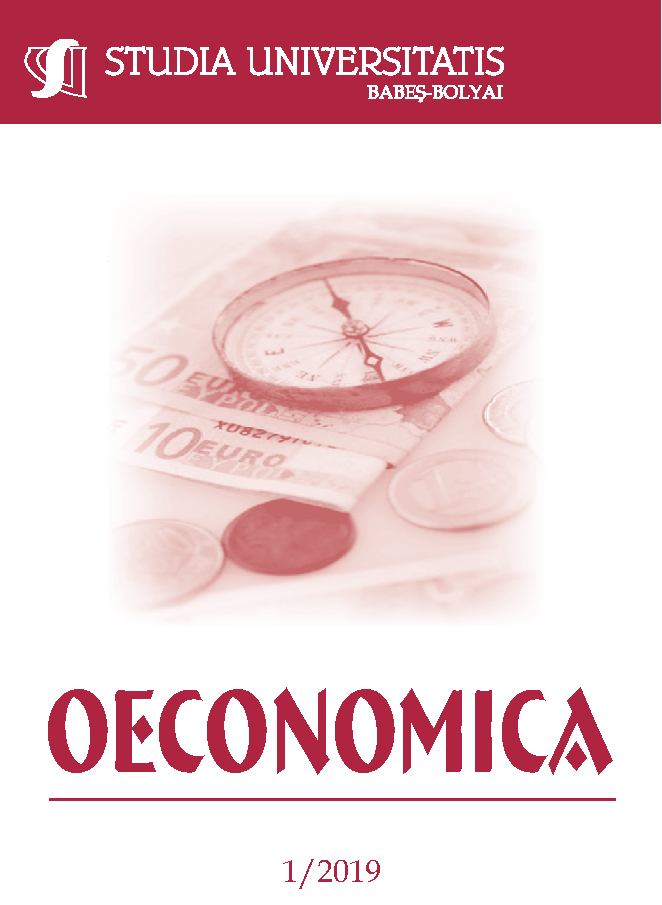INDUSTRIAL SECTOR GROWTH, MACROECONOMIC PERFORMANCE, AND CORRUPTION IN THE SUB SAHARA AFRICA
DOI:
https://doi.org/10.2478/subboec-2019-0010Keywords:
Industrial sector growth, Macroeconomic performance, Corruption.Abstract
The study investigates the impacts of macroeconomic performance and corruption on the industrial growth of the SSA. The industrial sector is seen as the engine of the economic development of any country and hence policies that will promote the growth of the sector cannot be over emphasized. The study investigated effects of macroeconomic variables such as exchange rate, economic growth, inflation rate and unemployment rate as measures of economic performance in the SSA on the industrial sector growth. Also quality of institutions effects on industrial sector is investigated using control of corruption as proxy. The preliminary diagnostic results show that Panel Auto-Regressive Distributed Lags P-ARDL is appropriate for the estimation and the results show that both macroeconomic performance and corruption have significant impacts of the industrial sector growth in SSA. However, an exchange rate that will encourage domestic production, minimum inflation, and unemployment rates, will guarantee sustainable growth in the industrial sector, while tightening grip on control of corruption.
JEL Classification: E02, H11, L16;
References
AfDB, O. (2012) UNDP and UNECA. 2012. African Economic Outlook 2012.
Ahmad, N., Ali, S. (2010) Corruption and financial sector performance: A cross-country analysis. Economics Bulletin, 30(1), 303-308.
Asiedu, E., Freeman, J. (2009) The effect of corruption on investment growth: Evidence from firms in Latin America, Sub‐Saharan Africa, and transition countries. Review of Development Economics, 13(2), 200-214.
Freckleton, M., Wright, A., Craigwell, R. (2012) Economic growth, foreign direct investment and corruption in developed and developing countries. Journal of economic studies, 39(6), 639-652.
Loungani, P., Sheets, N. (1997) Central bank independence, inflation, and growth in transition economies. Journal of Money, Credit, and Banking, 381-399.
Maddala, G.S., Kim, I.-M. (1998) Unit roots, cointegration, and structural change: Cambridge university press.
Makochekanwa, A. (2009) Zimbabwe’s Currency Crisis: Which currency to adopt in the aftermath of the multi-currency regime?
Omoteso, K., Ishola Mobolaji, H. (2014) Corruption, governance and economic growth in Sub-Saharan Africa: a need for the prioritisation of reform policies. Social Responsibility Journal, 10(2), 316-330.
Rajan, R.G., Subramanian, A. (2011) Aid, Dutch disease, and manufacturing growth. Journal of development Economics, 94(1), 106-118.
Romer, P.M. (1988) Capital accumulation in the theory of long run growth. Retrieved from
Szeftel, M. (2000) Between governance under‐development: accumulation Africa's ‘catastrophic corruption’. Review of African Political Economy, 27(84), 287-306.
UNDP, U. (2015) Human development report 2015: Work for human development. United Nations Development Programme.
Van Rijckeghem, C., Weder, B. (2001) Bureaucratic corruption and the rate of temptation: do wages in the civil service affect corruption, and by how much? Journal of development Economics, 65(2), 307-331.
Zafar, A. (2007) The growing relationship between China and Sub-Saharan Africa: Macroeconomic, trade, investment, and aid links. The World Bank Research Observer, 22(1), 103-130.
Downloads
Published
How to Cite
Issue
Section
License
Copyright (c) 2019 Studia Universitatis Babeș-Bolyai Oeconomica

This work is licensed under a Creative Commons Attribution-NonCommercial-NoDerivatives 4.0 International License.






